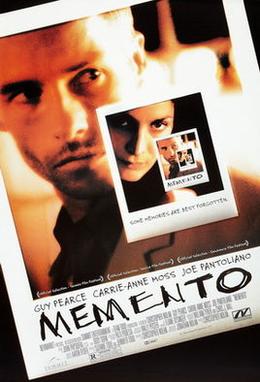the basics:
Narrative
Narrative is defined as “a chain of events in a cause-effect relationship occurring in
time” (Bordwell & Thompson, Film Art, 1980).
Diegesis
The internal world created by the story that the characters themselves experience
and encounter.
Story and plot
Story – all events referenced both explicitly in a narrative and inferred (including
backstory as well as those projected beyond the action)
Plot – the events directly incorporated into the action of the text and the order in
which they are presented.
Narrative Range
Unrestricted narration – A narrative which has no limits to the information that is
presented i.e. a news bulletin.
Restricted narration – only offers minimal information regarding the narrative i.e.
Thrillers
Narrative Depth
Subjective character identification – the viewer is given unique access to what a range of characters see and do
Objective character identification – the viewer is given unique access to a
character’s point of view such as seeing things from the character’s mind, dreams,
fantasies or memoriesthen it can be more complex:
Modular Narratives “articulate a sense of time as divisible and subject to manipulation”.
Cameron has identified four different types of modular narrative:
Anachronic
• Forking Paths
• Episodic
• Split Screen
Anachronic modular narratives involve the use of flashbacks and/or flashforwards, with no clear dominance between any of the narrative threads. These narratives also often repeat scenes directly or via a different perspective. Examples include: Pulp Fiction and Memento.
Memento is presented as two different sequences of scenes: a series in black-and-white that is shown chronologically, and a series of color sequences shown in reverse order. The two sequences "meet" at the end of the film, producing one common story
Forking-path narratives juxtapose alternative versions of a story, showing the possible outcomes that might result from small changes in a single event or group of events. The forking-path narrative introduces a number of plotlines that usually contradict one another. Examples include Groundhog Day and Run Lola Run.
 Run Lola Run (German: Lola rennt, literally Lola Runs) is a 1998 German film, written and directed by Tom Tykwer and starring Franka Potente as Lola and Moritz Bleibtreu as Manni. The story follows a woman who needs to obtain 100,000 German marks (50,984 Euro) in 20 minutes to save her boyfriend's life.
Run Lola Run (German: Lola rennt, literally Lola Runs) is a 1998 German film, written and directed by Tom Tykwer and starring Franka Potente as Lola and Moritz Bleibtreu as Manni. The story follows a woman who needs to obtain 100,000 German marks (50,984 Euro) in 20 minutes to save her boyfriend's life. Episodic narratives are organised as an abstract series or narrative anthology.Abstract series type of modular narrative is characterized by the operation of a nonnarrative formal system which appears to dictate (or at least overlay) the organization of narrative elements such as a sequence of numbers or the alphabet.Anthology consists of a series of shorter tales which are apparently disconnected but share a random similarity, such as all ‘episodes’ being survivors of a shipwreck.
 Lost is a drama series containing elements of science fiction and the supernatural that follows the survivors of the crash of a commercial passenger jet flying between Sydney and Los Angeles, on a mysterious tropical island somewhere in the South Pacific Ocean. The story is told in a heavily serialized manner. Episodes typically feature a primary storyline on the island, as well as a secondary storyline from another point in a character's life.
Lost is a drama series containing elements of science fiction and the supernatural that follows the survivors of the crash of a commercial passenger jet flying between Sydney and Los Angeles, on a mysterious tropical island somewhere in the South Pacific Ocean. The story is told in a heavily serialized manner. Episodes typically feature a primary storyline on the island, as well as a secondary storyline from another point in a character's life.Split screen narratives are different from the other types of modular narrative discussed here, because their modularity is articulated along spatial rather than temporal lines. These films divide the screen into two or more frames, juxtaposing events within the same visual field, in a sustained fashion. Examples includeTimecode.
 The film is constructed from four continuous 90-minute takes that were filmed simultaneously by four cameramen; the screen is divided into quarters and the four shots are shown simultaneously. The film depicts several groups of people in Los Angeles as they interact and conflict while preparing for the shooting of a movie in a production office. The dialogue was largely improvised, and the sound mix of the film is designed so that the most significant of the four sequences on screen dominates the soundtrack at any given moment.
The film is constructed from four continuous 90-minute takes that were filmed simultaneously by four cameramen; the screen is divided into quarters and the four shots are shown simultaneously. The film depicts several groups of people in Los Angeles as they interact and conflict while preparing for the shooting of a movie in a production office. The dialogue was largely improvised, and the sound mix of the film is designed so that the most significant of the four sequences on screen dominates the soundtrack at any given moment.
having copied my notes you need to engage with and deconstruct each statement applying it to specific scenes of films/ adding images and links where relevant
ReplyDeletethis is lots better - well chosen examples - to extend further and gain better marks please now reference how you could be influenced by these theories in your own production
ReplyDelete